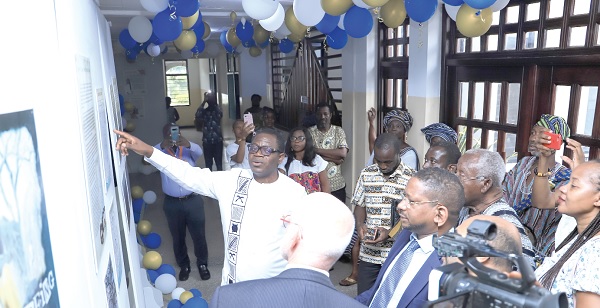
Exhibition on northern Ghana’s resistance to slavery underway
The Institute of African Studies (IAS) of the University of Ghana (UG) has held an exhibition showcasing how people from the northern part of the country resisted slavery during the era of the slave trade.
Advertisement
The exhibition, which opened yesterday, will continue until June 1 this year.
It is being held on the theme: “Every human being is a human being”, and attracted members of the diplomatic corps, people in the diaspora, civil society organisations and students.
Exhibition
It featured events from some of the former slave trade centres and markets such as Pikworo, Salaga, Sandema, Paga, Builsa, Sankana and Gwollu.
The exhibition, made up of photographs, texts and video documentaries, depicts the various techniques and defence mechanisms used by the natives of the north to fight slave raiders and merchants.
Also on exhibition are weapons and war regalia, as well as traditional wear, artefacts and instruments of the area.
It is meant to generate new perspectives and knowledge on the evolution of the country in the face of slavery and colonialism to change the existing narratives about slavery by highlighting the fact that there was serious resistance on the part of Africans to slavery.
Focus of resistance
The Director of the IAS, Prof. Samuel A. Ntewusu, explained that the exhibition focused on resistance because despite being a critical aspect of slavery, not much focus was placed on it.
He said the world needed to know that during the time of the slave trade, there were communities, individuals, ethnic groups and tribes that stood their ground against the institution, and for that reason, their stories needed to be told.
Prof. Ntewusu also noted that it could boost tourism because many people seemed to focus only on edifices such as forts and castles which formed just a small part of the slave trade.
“Our tourism and culture seem to be concentrated on buildings as if that was the end of it, as far as slavery is concerned.
However, people need to know that beyond forts and castles, there are specific places that you could have a similar or even better experience of the whole issue of slavery,” he said.
Preservation
The Representative of the United Nations Educational, Scientific and Cultural Organisation (UNESCO) to Ghana, Abdourahamane Diallo, noted that enslaved people had always resisted slavery by using their culture.
He added that it was for that reason that UNESCO was working to preserve and enhance such heritage through publications, debates and other public meetings so that its memory could add to the recognition of the cultural contributions of people of African descent.
Mr Diallo stated that the organisation would support member states who would leverage local media outlets, including newspapers, television, and radio stations, to disseminate the general history of Africa, and who would also inculcate similar content into the curricula, co-curricular activities and teacher training programmes of their educational institutions.



